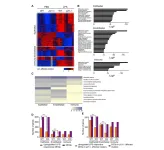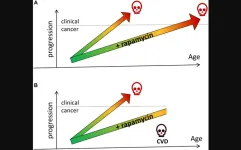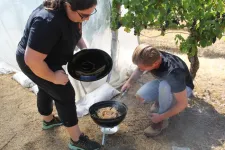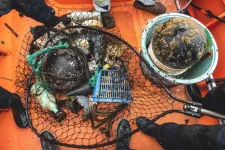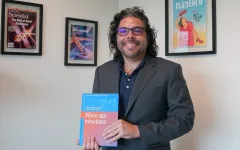Results from the S1609 DART clinical trial, which tested an immunotherapy combination of ipilimumab plus nivolumab in 53 cohorts of patients with rare cancers, are being reported for five cohorts of patients who had rare gynecologic cancers.
In three of those five cohorts – the cohorts for clear cell ovarian cancer; small cell ovarian carcinoma, hypercalcemic type; and non-epithelial ovarian cancer – some patients have shown durable responses to the immunotherapy, including several patients whose complete remissions have now lasted more than three years.
The findings will be presented in three abstracts at the 2023 annual meeting of the American Association for Cancer Research (AACR) in Orlando, Florida, on April 17th. The trial was conducted by the SWOG Cancer Research Network, a clinical trials group funded by the National Cancer Institute (NCI).
The rare cancers being reported on are clear cell ovarian cancer (cohort 46, N = 19), clear cell endometrial cancer (cohort 45, N = 8), clear cell cervical cancer (cohort 42, N = 5), non-epithelial ovarian cancer (cohort 13, N = 17), and small cell ovarian carcinoma, hypercalcemic type (cohort 49, N = 5).
The work was led and is being presented by Young Kwang Chae, MD, MPH, MBA, a SWOG investigator at the Northwestern University Feinberg School of Medicine and Robert H. Lurie Comprehensive Cancer Center.
“These are very exciting results we’re seeing,” Chae said. “Historically, rare cancers have not received much attention due to their rarity. However, it’s precisely these patients with rare gynecologic cancers that are often with the greatest unmet need for therapy options.”
“In many of these cancer types, we are reporting for the first time a meaningful impact to patient outcomes. These results are helping us identify key subtypes to focus future efforts on, and we would also need a more detailed investigation into the biology of these cancers with a focus on the translational aspects.”
Among the 19 patients with clear cell ovarian cancer enrolled to the trial, three had disease that showed a complete response to treatment, with two of these patients still in complete remission after more than three years.
In the group of five patients on the trial with small cell ovarian carcinoma, hypercalcemic type, one patient experienced a complete response to treatment, with their complete remission now lasting about three years as well. Also in this cohort, a second patient’s disease showed a partial response to treatment.
In the cohort of patients with non-epithelial ovarian cancer, four of the eight patients with a subtype known as granulosa cell tumors experienced stable disease or better for at least six months on treatment, a clinical benefit rate in this subtype of 50 percent. One additional patient in this cohort, with Sertoli-Leydig cell subtype disease, also showed clinical benefit from treatment.
These results are just the latest from the DART (Dual Anti-CTLA-4 & Anti-PD-1 blockade in Rare Tumors) trial, a federally funded “basket” trial that tested the combination of ipilimumab and nivolumab against a wide range of rare cancers. These study drugs, known as immune checkpoint inhibitors, were provided Bristol Myers Squibb, the maker of both drugs.
Through DART (also known as S1609), this drug combination was tested in more than 800 patients with 53 different types of rare tumors. Other rare cancers that have been treated with some success in the trial include metaplastic breast cancer, neuroendocrine tumors, and angiosarcoma.
Rare cancers make up about a quarter of all cancers diagnosed. But because there are hundreds of types and each is so scarce, they are difficult to study. The DART trial has expanded opportunities for immunotherapy drug development in these cancers.
Study S1609 is supported by the NCI, part of the National Institutes of Health (NIH), led by SWOG, and conducted by the NIH-funded NCI National Clinical Trials Network (NCTN). This study was supported by the NIH/NCI through grants U10CA180888, U10CA180819, UG1CA233320, UG1CA233193, UG1CA233198, UG1CA233340,U10180821, U10CA180868, UG1CA189954, UG1CA189872, and UG1CA233327, and in part by Bristol Myers Squibb Company through a Cooperative Research and Development Agreement between the NCI and Bristol Myers Squibb. The S1609 DART trial number is NCT02834013 in the ClinicalTrials.gov registry.
In addition to Dr. Chae, coauthors on the three AACR abstracts include Megan Othus, PhD, SWOG Statistics and Data Management Center; Sandip Pravin Patel, MD, University of California at San Diego Moores Cancer Center; Kelly J. Wilkinson, MD, University of Mississippi; Emily M. Whitman-Purves, MD, The Mark H. Zangmeister Center/Columbus NCORP; Jayanthi Lea, MD, UT Southwestern/Simmons Cancer Center-Dallas; John M. Schallenkamp, MD, Billings Clinic Cancer Center/Montana NCORP; Nabil Adra, MD, Indiana University/Melvin and Bren Simon Cancer Center; Leonard J. Appleman, MD, UPMC Hillman Cancer Center; Mitchell Alden, DO, Doylestown Hospital, Thomas Jefferson University; Jessica Thomes Pepin, MD, Metro Minnesota Community Oncology Research Consortium/Minnesota Oncology Hematology PA; John A. Ellerton, MD, Nevada Cancer Research Foundation; Andrew Poklepovic, MD, Virginia Commonwealth University; Adam Walter, MD, ProMedica Flower Hospital; Murtuza M. Rampurwala, MD, MPH, University of Chicago Medicine; Floortje J. Backes, MD, Ohio State University; David M. O’Malley, MD, Ohio State University; Mihaela Cristea, MD, City of Hope Comprehensive Cancer Center; Aung Naing, MD, MD Anderson Cancer Center; Katherine Kurnit, MD, MPH, University of Chicago; Ramez N. Eskander, MD, University of California at San Diego Moores Cancer Center; Scott T. Goodrich, MD,Parkview Regional Medical Center; Raid Aljumaily, MD, Oklahoma University Health Stephenson Cancer Center; Khine Z. Win, MD, UC Davis Comprehensive Cancer Center/Fremont – Rideout Cancer Center; Tanya Pejovic, MD, PhD, Oregon Health & Science University; Sajeve S. Thomas, MD, Orlando Health Cancer Institute/University of Florida; Liam Il-Young Chung, MD, MPH, Northwestern University; Christine M. McLeod, SWOG Data Operations Center; Helen X. Chen, MD, National Cancer Institute, Investigational Drug Branch, Cancer Therapy Evaluation Program; Elad Sharon, MD, MPH, National Cancer Institute, Investigational Drug Branch, Cancer Therapy Evaluation Program; Howard Streicher, MD, National Cancer Institute, Investigational Drug Branch, Cancer Therapy Evaluation Program; Christopher W. Ryan, MD, Oregon Health & Science University; Charles D. Blanke, MD, SWOG Group Chair’s Office, Oregon Health & Science University, Knight Cancer Institute; Razelle Kurzrock, MD, Medical College of Wisconsin. The S1609 study team also includes Marcia Horn, JD, representing the voice of the patient in the development and conduct of the trial.
SWOG Cancer Research Network is part of the National Cancer Institute's National Clinical Trials Network and the NCI Community Oncology Research Program and is part of the oldest and largest publicly funded cancer research network in the nation. SWOG has more than 18,000 members in 45 states and nine foreign countries who design and conduct clinical trials to improve the lives of people with cancer. SWOG trials have led to the approval of 14 cancer drugs, changed more than 100 standards of cancer care, and saved more than 3 million years of human life. Learn more at swog.org, and follow us on Twitter at @SWOG.
References:
AACR 2023, Phase II Clinical Trials 1 session
4/17 1:30-5:00 pm (section 47)
CT161/23: “A phase II basket trial of dual anti-CTLA-4 and anti-PD-1 blockade in rare tumors (DART) SWOG S1609: the non-epithelial ovarian tumor cohort #13”
CT162/24: “A phase II basket trial of dual anti-CTLA-4 and anti-PD-1 blockade in rare tumors (DART) SWOG S1609: the clear cell ovarian, endometrial, cervical cancer cohorts #42, 45, 46”
CT163/25: “A phase II basket trial of dual anti-CTLA-4 and anti-PD-1 blockade in rare tumors (DART) SWOG S1609: the small cell carcinoma of the ovary, hypercalcemic type cohort #49” END
